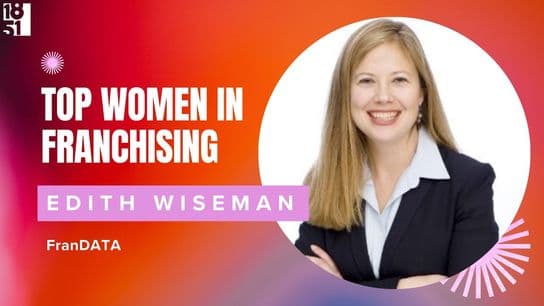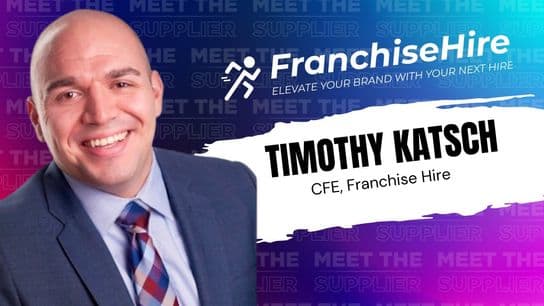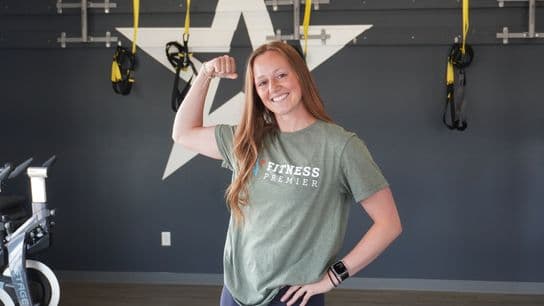Five Things I Wish I Knew When I Decided to Franchise My Business
Pretty in Paint Parties Founder Erica Baatz Bridges and SoBol Founder Jason Mazzarone revisit the journey of turning an idea into a national concept.
Finding that winning idea, running with it, and turning it into a successful business is definitely not as easy as we’d all like it to be. What might make sense to one person, does not translate to others and cannot always be turned into a 100-unit idea. But, for those businesses that can, it’s not always smooth sailing from the get-go.
To get a better grasp on pitfalls that happen during the franchising process, 1851 Franchise connected with Pretty in Paint Parties Founder Erica Baatz Bridges and SoBol Founder Jason Mazzarone to understand each the journey from turning a winning idea into a successful franchise model.
1. Have the Right Policies in Place
What works for one person does not necessarily work for another. But, when establishing a consistent franchise model, it’s important to get as close as you can to a universal model. Policies are the first place to start.
“There are a lot of unknowns,” said Mazzarone. “I wish I knew what it took when growing from one to two units, even from three to four. You can have a system in place for the corporate store, but that might not necessarily work across the franchise system. Take time on those policies and test them out before finalizing the model.”
Use the corporate store as a test center and be open to changes. Policies will change, but if they are thorough from the franchise launch, they can always act as a base and continuously be built on.
2. Surround Yourself with the Right People
For franchisors with a franchising background, familiarity with the sector can help with building out the model. For those who don’t have that background, like Bridges, it’s important to make sure the team behind the franchisor is stacked with people who will have their best interests in mind.
“You need good people behind you. I think the best thing we did is hire a franchise lawyer and franchise advisor,” said Bridges, who worked with Lane Fisher and SMB Franchise Advisors* in the launch of Pretty in Paint Parties. “Both knew the type of company we were and what we were hoping to be, and we knew they would always be on our journey with us.”
Mazzarone seconded the need for a strong support system and also utilized the expertise of SMB Franchise Advisors in the launch of SoBol franchising.
“A franchise advisor will tell you if you are ready to launch a franchise model, and they will definitely tell you if your concept isn’t at that point yet,” said Mazzarone. “You don’t want your system to grow faster than you can build it, so it’s important to make sure all of the different pieces are in place.”
3. What Worked for One Store, Won’t Work for Ten
Typically, franchisors will build the model based on what was needed to successfully run a handful of corporate locations. Supplies are something that are not often considered in the sense of how the quantity and quality will change when that number turns from two to twenty.
Take Pretty in Paint Parties for example, which is a model in which the supply and demand play a large part in the concept. When operating one or two corporate locations it was easy to gauge the amount of supplies to order based on trends in business, busy season, etc. But, once that number multiplied by ten, it was clear that the ordering process had to change.
“We tried to think of a good solution where our franchisees could order the supplies through us, since this is what we were used to and thought should stay consistent,” said Bridges. “We let go of this whole idea because we realized it wasn’t financially benefiting our franchisees. You can get bigger discounts with the big box stores, and ordering was a quicker process when they didn’t have to submit orders through us.”
4. Staying Focused on the Franchisee
Most won’t admit it, but a good number of franchisors get into the business with dollar signs in their eyes. What they don’t realize is that without the success of the franchisees, those dollar signs will not turn into actual cash flow.
“I think it’s easy to focus on what is going to make you, the franchisor, successful,” said Bridges. “You need to focus on the franchisees. What’s going to make them happy and less burdened by stress? I think it’s the most important aspect of franchising, especially in the beginning.”
5. Teach by Example: The Corporate Store
A successful corporate store is essentially the reason any franchisor decides to franchise their concept. It worked for one location, why won’t it work for 500 locations? Once a franchise model is put in place, this corporate store should still act as a model of success to all of the franchised locations.
“The corporate store is a great test center to try out new processes before rolling them out to the entire system,” said Mazzarone. “You don’t ever want to be close minded and refuse to evolve the concept, and this is the place to try out these new ideas and see if they will work system wide. It should also act as a model to the other stores on how the well-oiled machine should run.”
While the process of establishing a franchise model will never be completely scotch-free, franchisors like Mazzarone and Bridges have been able to learn from their mistakes and unfamiliarity with certain aspects along the way. Whether it’s focusing on those core policies, making sure the support team is stacked and the model is scalable, putting the franchisees first and foremost, or leading by example, each and every single unexpected pitfall can turn into a teachable moment. By adapting to these changes and fine-tuning the model, the possibilities for growth are endless.
*This brand is a paid partner of 1851 Franchise. For more information on paid partnerships please click here.













